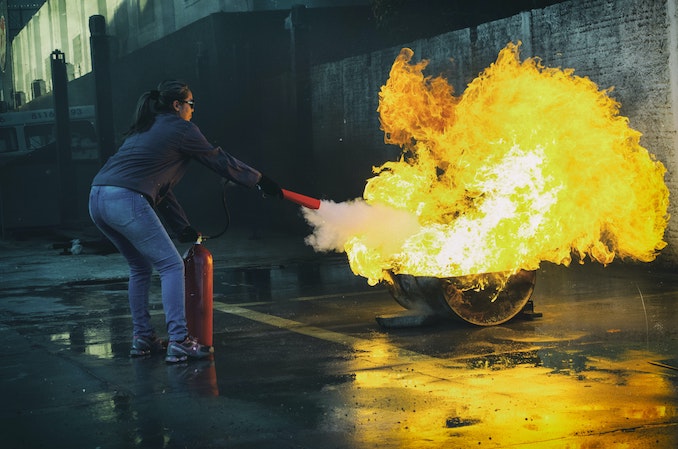Most residential fires fall under the ABC category, arising from sources that can be used with the appropriately-coded extinguishers. Industrial areas, however, are more likely to have fires where ABC extinguishers will either provide no benefit or make the fire worse. For these environments, you should seek out specialized extinguishers that use chemical compounds such as CO2 or fire extinguishers for metal fires to deal with particularly hot and volatile blazes. The right tool for the job can keep you from facing disaster in the workplace.

CO2 Extinguishers
A fire extinguisher with CO2 is designed to fight class B and C fires. This includes fires that start as a result of flammable liquids and electrical hazards. Using a CO2 spray, the extinguisher smothers the fire without spreading the liquid or harming the electronics involved. The gas leaves behind no residue or wetness, so there is no potential shock hazard when used around electricity. In most cases, if you can a fire earlier enough, you can continue to use electronics that might have otherwise been rendered useless without a CO2 extinguisher on hand. Because of their cleanliness and efficiency, these extinguishers most commonly used in medical facilities, mechanical shops, airfields, and anywhere else where class B and C fires might be particularly common.
Class D Fire Extinguishers
Metal fires burn hotter and are more hazardous than many other types of fire. The use of ABC extinguishers in this case won’t cool the fire off enough or smother it effectively, thus rendering them useless against the blaze. In these situations, class D fire extinguishers exist to help put out these industrial flames. Class D extinguishers use a chemical compound that is very effective against fires that begin from sodium, potassium, zirconium, and other metals. It can also help put out plastic fires quickly. In any industrial area where these hazardous materials are in use near high temperatures, a class D fire is an essential safety tool to have on site.
Keeping Multiple Extinguisher Types
Some areas might need to keep different fire extinguishers on hand for different purposes. For example, an area that deals with heating metal compounds almost certainly needs a class D extinguisher, but the presence of electrical equipment might also warrant a CO2 extinguisher. If you have multiple types of firefighting equipment in the same area, it is absolutely essential that you label them properly and provide training to employees so they know how to respond in the case of emergency. Using the wrong type of extinguisher for a fire can not only prove ineffective, but it can make the problem at hand much worse. The more you can do to avoid confusion in an emergency, the better.
It’s very important to have the right fire extinguishers for the most likely hazards in your building. This may require careful placement and signage if you have multiple types of potential dangers. By following the advice presented above, you will be able to keep your building safe even should a fire break out.
